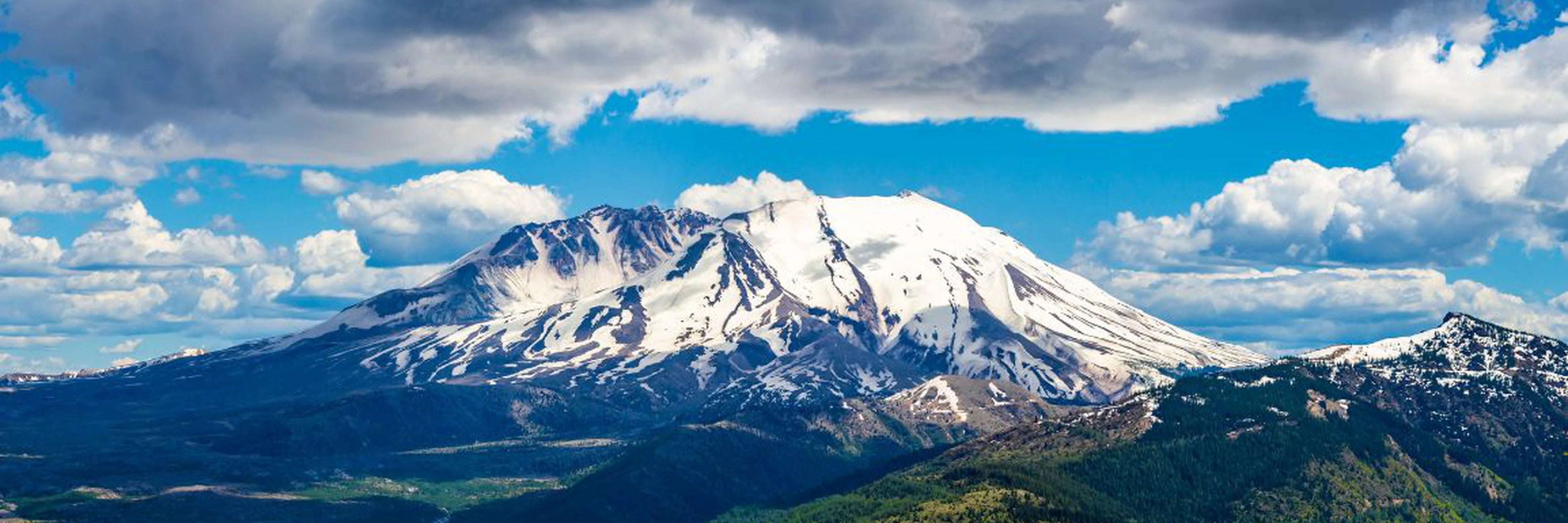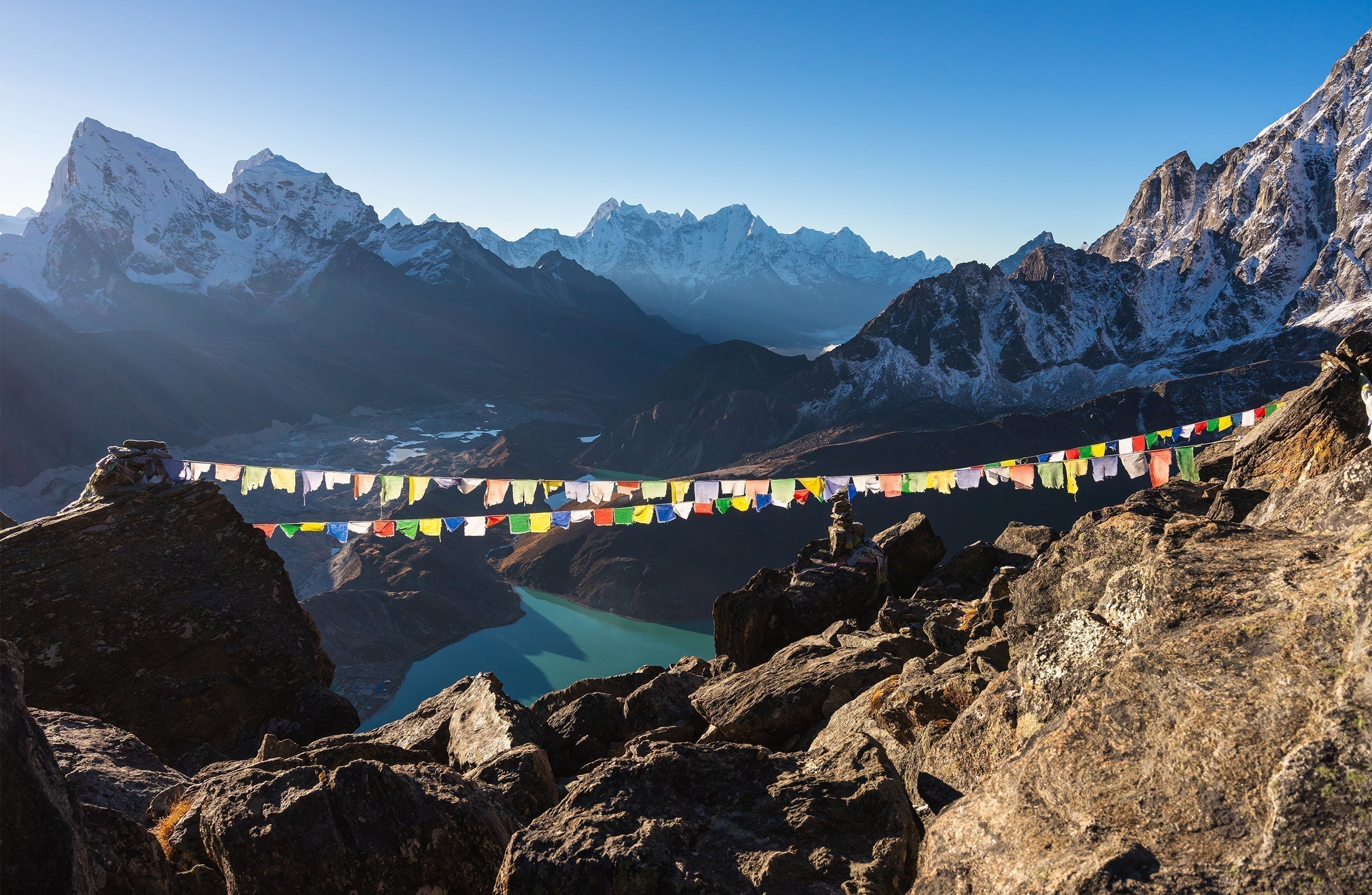Der Kaskadenbogen ist eine Reihe von Vulkanen, die innerhalb der Kaskadenkette liegen, die durch die Subduktion der tektonischen Platten der Erde entstanden ist. Dadurch entstand eine Reihe von Vulkanen, die sich von Nordkalifornien über Oregon und Washington bis nach Kanada erstreckt. Dieser Artikel beschreibt alles, was Sie über dieses feurige Land wissen müssen, von seinen Formationen und Merkmalen bis hin zu seinen Ausbrüchen.
Einführung in den Cascade Volcanic Arc
Der Cascade Volcanic Arc ist eine Vulkankette entlang der Cascadia-Subduktionszone, die sich über mehr als 700 Meilen von Nordkalifornien bis nach British Columbia in Kanada erstreckt. Er erstreckt sich über eine Distanz von über 700 Meilen und umfasst 20 große Vulkane und fast 4.000 Vulkanschlote. Der Cascade Arc entstand vor über 30 Millionen Jahren und weist die zweithöchste vulkanische Aktivität in den USA auf – die höchste ist der Yellowstone-Nationalpark. Tatsächlich ging jeder Vulkanausbruch der letzten zwei Jahrhunderte in den zusammenhängenden USA vom Cascade Volcanic Arc aus.
Die Vulkane der Kaskadenkette sind Teil des sogenannten Pazifischen Feuerrings. Diese Region umschließt den Rand des Pazifischen Ozeans und wird so genannt, weil hier 75 % der weltweiten vulkanischen Aktivität stattfindet. Die vier größten Vulkanausbrüche der aktuellen geologischen Epoche ereigneten sich im Pazifischen Feuerring, einer davon war der des Mount Mazama, der Teil des Kaskaden-Vulkanbogens in Oregon ist, vor etwa 7.700 Jahren.
Die jüngste Aktivität des Kaskaden-Vulkanbogens fand zwischen 1914 und 1917 am Lassen Peak in Kalifornien statt, und 1980 kam es zum großen Ausbruch des Mount St. Helens in Washington. Aufgrund der Bedeutung der vulkanischen Aktivität und des zunehmenden Bevölkerungswachstums im pazifischen Nordwesten werden mehrere Vulkane, wie der Mount Rainier, der höchste Gipfel der Kaskadenkette, besonders beobachtet und untersucht. Im Durchschnitt bricht in der Kaskadenkette ein- oder zweimal pro Jahrhundert ein Vulkan aus, wobei seit der Unabhängigkeitserklärung im Jahr 1776 mindestens sieben Vulkane ausgebrochen sind.
Geschichte des Kaskadenvulkanbogens
Der Vulkanismus in den Kaskaden hat eine 40 Millionen Jahre alte Geschichte, die begann, als urzeitliche Vulkane erstmals durch das Meer drangen. Zwanzig Millionen Jahre später schufen kontinuierliche Ausbrüche eine mehrere Kilometer dicke Gesteinsschicht, die das Rückgrat der Kaskadenkette bildete. Eine Studie der University of Oregon untersuchte 2.100 Vulkane und schätzte, dass in den letzten 2,6 Millionen Jahren 2.730 Kubikkilometer Material ausgebrochen sind. Um das in Relation zu setzen: Jede Meile der Kaskaden produzierte so viel Material, dass man ganz Manhattan jede Million Jahre 92 Fuß hoch bedecken könnte. Diese Schichten wurden dann vor etwa 10 Millionen Jahren erodiert und bildeten das Fundament der Kaskadenvulkane.
Vor gerade einmal zwei Millionen Jahren begannen Ausbrüche mit der Bildung von Schlackenkegeln. Der Vulkankegel des Mount Rainier ist beispielsweise rund 500.000 Jahre alt. Der Kegel des berühmtesten Vulkans der Kaskadenkette, des Mount St. Helens, begann sich erst vor 4.000 Jahren zu bilden. Das mag zwar uralt erscheinen, doch die Kaskadenkette gilt als ziemlich jung. Die Appalachen sind im Vergleich dazu 250 Millionen Jahre alt.
Wie entstand der Kaskaden-Vulkanbogen?
Vulkane bilden sich an den Grenzen tektonischer Platten. Die Theorie der Plattentektonik besagt, dass die äußere Erdkruste, die Lithosphäre, in Platten unterteilt ist, die sich über die zweite Schicht der Erde, die Asthenosphäre, bewegen, den teilweise geschmolzenen oberen Teil des Erdmantels. Tektonische Platten berühren sich, sind aber ständig in Bewegung. Diese Bewegung schafft einen Weg, auf dem Magma an die Erdoberfläche aufsteigen kann.
Ein Vulkanbogen ist eine Kette von Vulkanen, die über einer subduzierenden Plattengrenze gebildet werden. Vulkane im Kaskadenbogen entstehen in der Subduktionszone der Kaskadenkette, wo die ozeanischen Platten Juan de Fuca, Gorda und Explorer aufeinandertreffen und dann subduziert werden, d. h. unter die kontinentale nordamerikanische Platte gedrückt werden. Wenn sich zwei Platten aufeinander zubewegen, spricht man von einer konvergenten Plattengrenze, die intensive vulkanische Aktivität und Erdbeben hervorruft.
Wenn die ozeanischen Platten Juan de Fuca, Gorda und Explorer auf die kontinentale nordamerikanische Platte treffen, werden die ozeanischen Platten in den Erdmantel gedrückt, da sie dichter sind als die kontinentale Platte. Dieser Vorgang wird als Subduktion bezeichnet. Wenn die ozeanischen Platten unter die kontinentale Platte absinken, werden sie in Umgebungen mit höheren Temperaturen gedrückt und beginnen in 160 km Tiefe zu schmelzen. Dieses Schmelzen erzeugt Kammern aus Magma, die weniger dicht sind als die umgebenden Materialien des Erdmantels und daher aufsteigen.
Wenn diese Magmakammern an die Erdoberfläche steigen, ohne zu erstarren, bricht das Magma in Form eines Vulkanausbruchs durch. Die ständigen Ausbrüche über Millionen von Jahren, die sich oberhalb des Schmelzpunkts der Cascadia-Subduktionszone, etwa 150 km östlich der Grenze der Cascadia-Platte selbst, gebildet haben, haben das geformt, was wir heute als den Kaskaden-Vulkanbogen bezeichnen. Die 40 Millionen Jahre alte Ausbruchsgeschichte hat eine große Anzahl seltener und interessanter vulkanischer Merkmale geschaffen, die im Folgenden erläutert werden …
Merkmale des Cascade Arc
Die Vulkane im Kaskadenbogen haben zwar gemeinsame Merkmale und Eigenschaften, aber jeder von ihnen hat seine eigenen geologischen Besonderheiten und Merkmale. Es wird allgemein angenommen, dass der südlichste aktive Vulkan im Bogen der Lassen Peak in Nordkalifornien ist, während der nördlichste Vulkan das Mount-Meager-Massiv in British Columbia ist. Der Kaskadenbogen enthält Gipfel wie den Mount Meager, obwohl er jenseits des Fraser River liegt, dem allgemein akzeptierten Ende der Kaskadenkette, da der Kaskadenbogen ein geologischer Begriff ist, während die Kaskadenkette ein geografischer Begriff ist.
Zwölf Vulkane im Kaskadenbogen sind über 3.000 m hoch, wobei die beiden höchsten, Mount Rainier und Mount Shasta, über 4.300 m hoch sind. Flächenmäßig sind dies jedoch nicht die größten Vulkane. Die Schildvulkane Medicine Lake Volcano (600 km3) und Newberry Volcano (450 km3) sind die größten Vulkane nach Volumen. Im Folgenden entdecken wir die markantesten Naturmerkmale des Kaskadenbogens:
Stratovulkane
Stratovulkane sind die klassischen kegelförmigen Vulkane. Sie haben ein steiles Profil und einen Gipfelkrater und sind durch periodische explosive Ausbrüche aufgrund der hohen Menge und des hohen Drucks der Gasansammlung gekennzeichnet. Im Kaskadenbogen haben Stratovulkane die höchsten Gipfel. Mount Rainier ist ein Stratovulkan, der höchste Gipfel der gesamten Kaskadenkette. Sie werden manchmal als Schichtvulkane bezeichnet, da die kegelförmige Form durch die Ansammlung vieler Schichten, d. h. Strata, aus gehärteter Lava entsteht. Die Lava von Stratovulkanen ist hochviskos, d. h. sie ist ziemlich klebrig, sodass sie nicht so weit von ihrem Ausbruchsort wegfließt. Da sie in der Nähe ihres Ausbruchsortes erstarrt und aushärtet, können sich Schichten bilden, die steile Hänge verursachen. Entlang des Kaskadenbogens gibt es 24 Stratovulkane.
Schildvulkane
Im Gegensatz zu Stratovulkanen hat ein Schildvulkan ein niedriges Profil und sanfte Hänge – ähnlich dem Schild eines Kriegers. Im Kaskadenbogen gibt es 21 Schildvulkane, der höchste ist der Diamond Peak in Oregon mit 2.665 m. Am beeindruckendsten sind jedoch die Gesamtfläche und das Gesamtvolumen der Schildvulkane. Die Lava von Schildvulkanen hat eine niedrige Viskosität, was bedeutet, dass sie sehr flüssig ist. Dies bedeutet, dass sie sich weit von der Quelle des Vulkans ausbreitet und nur sanfte Hänge verursacht. Aktive Schildvulkane neigen dazu, über lange Zeiträume nahezu konstante Eruptionsaktivität zu haben, sind aber tendenziell weniger explosiv, wobei die stetige Ansammlung von Lavaschichten die charakteristische Form bildet.
Lavadome
Ein Lavadom ist ein kreisförmiger Hügel, der entsteht, wenn Lava die Erdoberfläche erreicht. Diese ist so zähflüssig, dass sie nicht leicht abfließen kann und sich daher um die Öffnung herum ansammelt. Mount Hood, nur 90 Minuten von Portland entfernt, weist den bekanntesten Lavadom im Kaskadenbogen auf, der Crater Rock genannt wird. Der Newberry Volcano, der zweitgrößte Schildvulkan, weist eine der weltweit größten Ansammlungen von Lavadomen auf.
Calderas
Eine Caldera ist eine große Vertiefung, die entsteht, wenn ein Vulkan ausbricht und dann in sich zusammenfällt. Wenn ein Vulkan ausbricht, wird das in der Magmakammer enthaltene Magma ausgestoßen und die Stütze, die das Magma der Kammer bietet, wird entfernt. Infolgedessen stürzen die Seiten und die Spitze eines Vulkans nach innen ein und verursachen eine Caldera. Der Ausbruch des Mount Mazama in den Oregon Cascades im Jahr 5750 v. Chr. war so groß, dass der größte Teil des Mount Mazama einstürzte und eine Caldera bildete. Spätere Ausbrüche schufen eine zentrale Plattform, Wizard Island, einen Schlackenkegel, der durch die Ansammlung ausgestoßener Felsfragmente und Asche gebildet wurde und einen kegelförmigen Hügel bildete. Als die Caldera abkühlte, sammelten sich Regen und Schnee und bildeten einen See – den Crater Lake – der für seine tiefblaue Farbe und Klarheit bekannt ist.
Tuyas
Ein Tuya ist ein Vulkan mit flacher Spitze, aber steilen Wänden. Er ist eine seltene vulkanische Schöpfung, da seine Entstehung vulkanische Aktivität in Gebieten erforderte, die gleichzeitig von Gletschern bedeckt waren. Tuyas entstehen durch einen Ausbruch unter einem Gletscher, der die Lava dann sehr schnell abkühlt, was bedeutet, dass sie nicht weit wandert und sich zu einem steilen Hügel auftürmt. Wenn der Ausbruch anhält, schmilzt er das gesamte umgebende Eis oder staut sich über dem Gletscher, wo die Lava normalerweise wirkt, und bildet auf der Spitze des Hügels eine flache Kappe. Hayrick Butte ist eines der am perfektesten geformten Beispiele eines Tuyas auf der Welt und befindet sich in Linn County, Oregon. Sein fast flaches, dreieckiges Plateau ist 0,8 km breit und hat Wände, die sich 210 m über die darunterliegende Ebene erheben. Weitere Beispiele für Tuyas in der Kaskadenkette finden sich in Oregon und auch rund um Mount Garibaldi in British Columbia.
Die 10 höchsten Vulkane im Kaskadenbogen
- Mount Rainier (Washington) – 4.392 Meter/14.411 Fuß
- Mount Shasta (Kalifornien) – 4.317 Meter/14.162 Fuß
- Mount Adams (Washington) – 3.742 Meter/12.276 Fuß
- Mount Hood (Oregon) – 3.426 Meter/11.239 Fuß
- Mount Baker (Washington) – 3.286 Meter/10.781 Fuß
- Glacier Peak (Washington) – 3.206 Meter/10.520 Fuß
- Mount Jefferson (Oregon) – 3.199 Meter/10.497 Fuß
- Lassen Peak (Kalifornien) – 3187 Meter/10.457 Fuß
- Silverthrone Caldera (British Columbia, Kanada) – 3.160 Meter/10.370 Fuß
- South Sister (Three Sisters, Oregon) – 3.157 Meter/10.358 Fuß
Ausbrüche im Kaskadenvulkanbogen
Der Kaskadenbogen ist eines der Gebiete mit der höchsten Eruptionsaktivität weltweit. Tatsächlich sind 11 Kaskadenvulkane in den letzten 4.000 Jahren mindestens einmal ausgebrochen. Allerdings können Kaskadenvulkane zwischen den Ausbrüchen Tausende von Jahren inaktiv bleiben. Die beiden jüngsten Ausbrüche waren der Lassen Peak von 1914 bis 1917 und der große Ausbruch des Mount St. Helens im Jahr 1980.
Ausbrüche des Lassen Peak: 1914–1917
Nach 27.000 Jahren Ruhe wurde Lassen am 30. Mai 1914 wieder vulkanisch aktiv. Am 19. Mai zerstörte ein großer Ausbruch die Kuppel des Vulkans, die auf die oberen Flanken des Vulkans fiel und einen 65 km langen und 0,8 km breiten vulkanischen Erdrutsch auslöste, der Häuser von ihren Fundamenten riss und einige Menschen leicht verletzte, die jedoch alle mit dem Leben davonkamen.
Am 22. Mai 1915 verursachte ein weiterer Ausbruch eine Asche- und Gaswolke, die mehr als 9 km hoch in die Luft stieg und sich 320 km nach Osten ausbreitete. Ein pyroklastischer Strom fegte den Vulkan hinab und verwüstete einen 7,8 km2 großen Bereich. Dies war der bedeutendste Ausbruch in einer Reihe von Ausbrüchen zwischen 1915 und 1917.
Ausbruch des Mount St. Helens: 1980
Am 18. Mai erschütterte ein Erdbeben der Stärke 5,1 den Mount St. Helens und löste den größten Erdrutsch der Geschichte aus. Außerdem kam es zu einem Ausbruch, der die gesamte Nordwand zum Einsturz brachte. Magma brach aus und die Aschewolke stieg bis zu einer Höhe von 24 km auf. Das Magma brach in einen großen pyroklastischen Strom aus und in weniger als 10 Minuten wurde alles in einem Gebiet von 230 Quadratmeilen zerstört. Der Einsturz der Nordwand vermischte sich mit Schnee, Eis und Wasser und erzeugte einen Lahar, der Brücken und Holzfällerlager zerstörte.
Bei dem Ausbruch kamen insgesamt 57 Menschen ums Leben, darunter ein Vulkanologe und ein Fotojournalist. Zusammen mit Tausenden von Tieren und Milliarden von Schäden ist es das tödlichste und wirtschaftlich verheerendste Ereignis, das die Vereinigten Staaten je heimgesucht hat. Es wird als plinianische Eruption bezeichnet, was bedeutet, dass es in seinem Ausmaß dem Vesuvausbruch von 79 n. Chr. ähnelt, der die antiken Städte Herculaneum und Pompeji zerstörte.
Glossar der vulkanischen Effekte
- Asche: feine Partikel pulverisierten Gesteins, die aus einem Vulkanausbruch austreten
- Schuttlawine: eine Lawine aus Schlamm, bestehend aus Gestein, Wasser und anderen Materialien, die durch den Einsturz einer instabilen Seite eines Vulkans entsteht.
- Ausbruch: Das Auftreffen von zerbrochenem Material und/oder Lava auf der Erdoberfläche.
- Eruptionsfahne: Eine Wolke aus Vulkanasche, die aus einem Vulkanschlot ausgestoßen wird.
- Lahar: eine Schlammlawine aus vulkanischem Material
- Lava ist geschmolzenes Gestein, das die Erdoberfläche erreicht hat und aus einem Vulkan ausgestoßen wurde oder effusiv fließt.
- Magma Geschmolzenes Gestein unter der Erdoberfläche
- Pyroklastischer Strom Eine sich schnell bewegende Wolke aus außergewöhnlich heißem Gas und vulkanischer Materie, die sich mit einer Durchschnittsgeschwindigkeit von 62 Meilen pro Stunde schnell über die Oberfläche eines Vulkans bewegt.








